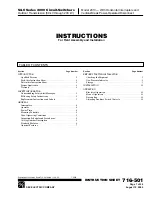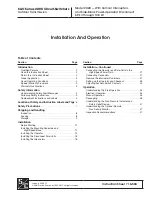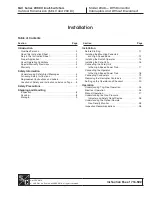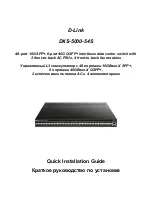
113
Every physical port on a switch has a PVID. 802.1Q ports are also assigned a PVID, for use within the switch. If no
VLAN are defined on the switch, all ports are then assigned to a default VLAN with a PVID equal to 1. Untagged
packets are assigned the PVID of the port on which they were received. Forwarding decisions are based upon this
PVID, in so far as VLAN are concerned. Tagged packets are forwarded according to the VID contained within the tag.
Tagged packets are also assigned a PVID, but the PVID is not used to make packet forwarding decisions, the VID is.
Tag-aware switches must keep a table to relate PVID within the switch to VID on the network. The switch will compare
the VID of a packet to be transmitted to the VID of the port that is to transmit the packet. If the two VID are different the
switch will drop the packet. Because of the existence of the PVID for untagged packets and the VID for tagged packets,
tag-aware and tag-unaware network devices can coexist on the same network.
A switch port can have only one PVID, but can have as many VID as the switch has memory in its VLAN table to store
them.
Because some devices on a network may be tag-unaware, a decision must be made at each port on a tag-aware
device before packets are transmitted – should the packet to be transmitted have a tag or not? If the transmitting port is
connected to a tag-unaware device, the packet should be untagged. If the transmitting port is connected to a
tag-aware device, the packet should be tagged.
■
Default VLANs
The Switch initially configures one VLAN, VID = 1, called
"default."
The factory default setting assigns all ports on the
Switch to the
"default"
. As new VLAN are configured in Port-based mode, their respective member ports are removed
from the "default."
■
Assigning Ports to VLANs
Before enabling VLANs for the switch, you must first assign each port to the VLAN group(s) in which it will participate.
By default all ports are assigned to VLAN 1 as untagged ports. Add a port as a tagged port if you want it to carry traffic
for one or more VLANs, and any intermediate network devices or the host at the other end of the connection supports
VLANs. Then assign ports on the other VLAN-aware network devices along the path that will carry this traffic to the
same VLAN(s), either manually or dynamically using GVRP. However, if you want a port on this switch to participate in
one or more VLANs, but none of the intermediate network devices nor the host at the other end of the connection
supports VLANs, then you should add this port to the VLAN as an untagged port.
Summary of Contents for NS3500-28T-4S
Page 1: ...NS3500 28T 4S User Manual P N 1072835 REV 00 01 ISS 14JUL14 ...
Page 41: ...41 3 Press the Apply button to save running configuration to startup configuration ...
Page 166: ...166 Figure 4 7 4 Multicast Flooding ...
Page 260: ...260 Buttons Click to clear the statistics Click to refresh the statistics ...
Page 282: ...282 Figure 4 9 66 Global DoS Setting Page Screenshot ...
Page 296: ...296 ...
Page 303: ...303 ...
















































